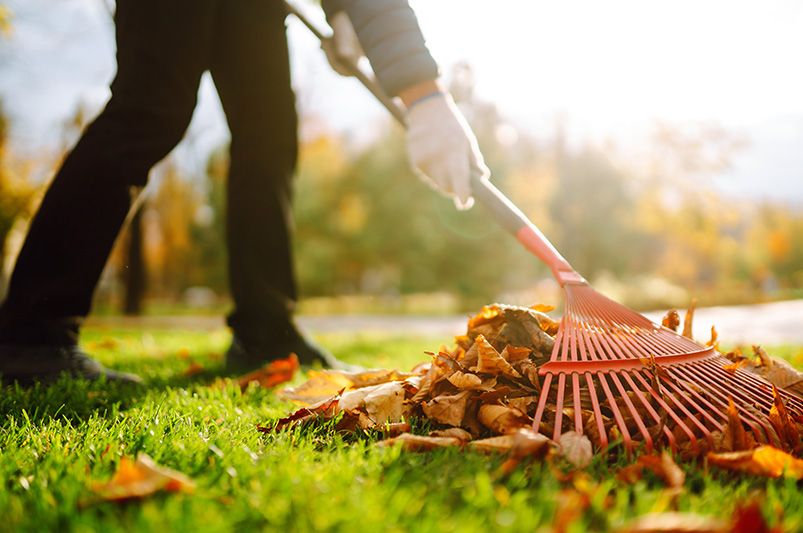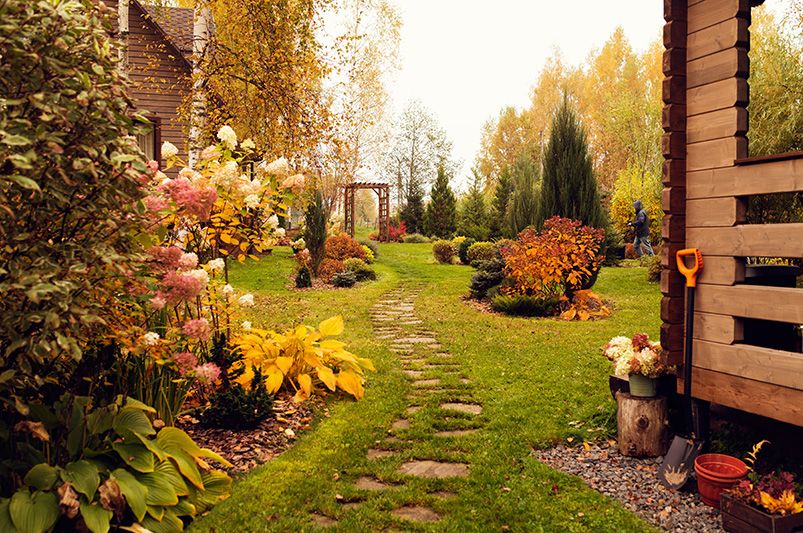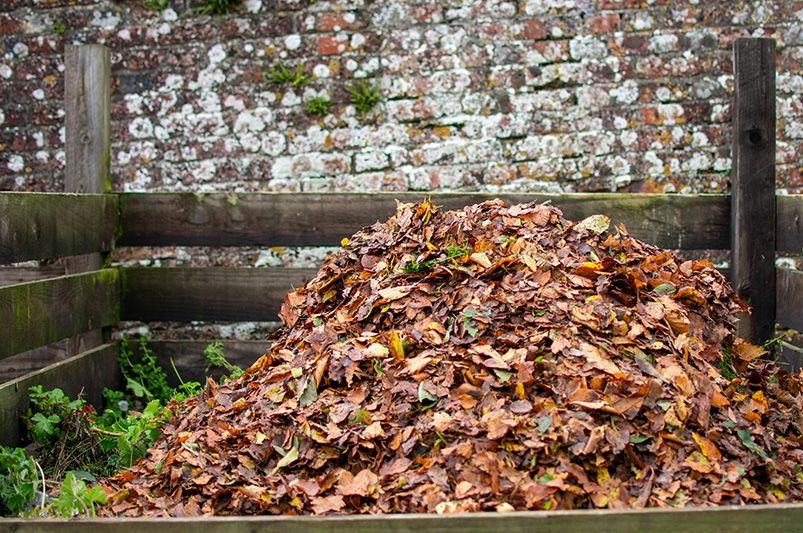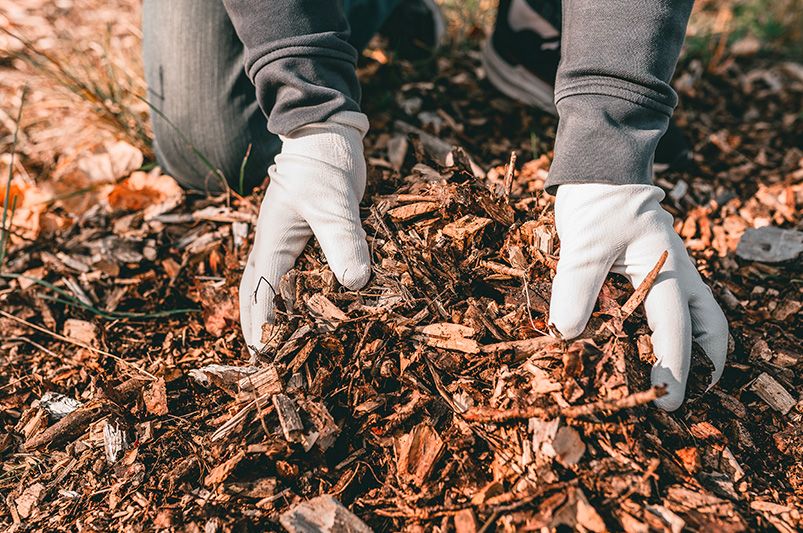
Fall Landscape Cleanup: Your Complete Checklist
Published: 27/08/2024 | Updated: 27/08/2024
Key Highlights
- Preparing your landscape for winter is essential for a healthy and vibrant yard next spring.
- Fall cleanup involves raking leaves, pruning dead branches, and preparing garden beds.
- Aerating and fertilizing your lawn in the fall promotes strong root growth for the following year.
- Protecting sensitive plants from frost damage helps ensure their survival through winter.
- Properly cleaning and storing gardening tools extends their lifespan and prevents damage.
Introduction
As the days become shorter and the air gets cooler, it's time to change focus from enjoying your beautiful yard to preparing it for winter. It may feel early, but fall cleanup is important. Doing key tasks now will help your yard stay healthy. This way, you set it up for a vibrant growing season next year when spring comes.


The Ultimate Fall Landscape Cleanup Checklist
This complete checklist includes all the important jobs for getting your lawn and garden ready for the cold months. You need to clear away debris and help keep delicate plants safe. Doing each task helps your yard stay healthy and last longer.
If you carefully follow these steps, your yard will look great next spring. You will also reduce any potential problems and make your spring gardening easier.
1. Evaluate Your Lawn and Garden's Needs
Before you start your fall cleanup, take a moment to check your lawn and garden. Look at your lawn. Do you see any bare spots, signs of disease, or too much thatch? Also, check your garden beds. Find any weeds that need to go and see if any plants need to be divided or moved.
Looking closely at your landscape gives you a good idea of what tasks to focus on. It also helps you know what materials to get. You can see if any areas need special treatment or help from a professional.
Careful checking and assessment make sure you meet all the needs of your lawn and garden. This way, you set yourself up for a successful fall cleanup.
2. Clear Fallen Leaves and Debris
One big sign of fall is the pile of fallen leaves. While they look nice, too many leaves can cover your lawn. This stops sunlight and air from reaching the grass. To help your lawn, rake up the fallen leaves often. You can make a compost pile with the leaves. This will give your garden good organic matter.
Another choice is to use a lawn mower to shred the leaves. You can leave the shredded leaves on the lawn. This is called "grasscycling." It helps put nutrients back into the soil, which helps your lawn grow healthy.
Taking care of fallen leaves quickly is good for your lawn. It also helps stop moisture from building up. This reduces the chance of fungal diseases and pests.
3. Prune Dead or Dying Branches
Fall is a great time to check your trees and shrubs for any dead, damaged, or sick branches. Cutting these branches can make your plants look better. It can also stop diseases from spreading and help new growth.
Pay special attention to fruit trees. Pruning them when they are not growing helps them produce more fruit next year. Always use sharp and clean tools when you prune. This helps make clean cuts and reduces stress on the plant.
Adding pruning to your fall garden chores will help keep your trees and shrubs healthy, strong, and beautiful. This will help them stay vibrant for many years.

4. Prepare Your Soil for Winter
Before the cold temperatures arrive and the ground freezes, get your garden beds ready for winter. Start by taking out leftover plant debris and pulling weeds. You should also improve the soil by adding a layer of compost. This compost will help make the soil better, improve drainage, and give useful nutrients for the next growing season.
If you plan to plant in the spring, spreading a layer of mulch over the compost is a good idea. Mulch acts like a blanket for the soil. It helps keep temperatures steady and protects plant roots during the winter months.
By preparing your soil in this way, you can make sure it stays healthy and fertile all winter long. This will set you up for a productive and abundant garden next spring.
5. Plant Fall Bulbs and Seasonal Bedding
Fall is a great time to plant spring-blooming bulbs. This includes tulips, daffodils, and hyacinths. These bulbs need cold weather to grow strong roots. This helps create a beautiful show of color in spring.
Fall is also a good time to plant cold-hardy flowers like pansies and violas. They can brighten your garden with color in both fall and winter, especially in warmer areas.
When you plant these bulbs and flowers in fall, they can settle in before the ground freezes. This will reward you with a stunning and colorful garden next spring.
6. Protect Sensitive Plants from Cold
As temperatures get colder, it’s important to protect your plants that don’t handle the cold well. You should wrap delicate trees and shrubs with burlap or tree wrap to help prevent winter burn. This is especially important for new plants or those with thin bark.
You might also want to use frost blankets to cover soft perennials and annuals from sudden cold weather. This light and breathable fabric keeps your plants warm and safe from frost damage.
By taking these steps, you can help your more sensitive plants survive the winter. They will be ready to grow again when spring arrives.

7. Aerate and Fertilize the Lawn
A key part of taking care of your lawn in the fall is aeration. Aerating means making small holes in the soil. This allows air, water, and important nutrients to get deeper into the roots. You can use a manual core aerator or a power aerator, based on how big your lawn is.
After you aerate, put on a good lawn fertilizer made for fall use. This fertilization gives your lawn the nutrients it needs. It helps the roots grow deep and prepares your lawn to handle the winter months better.
When you aerate and fertilize in the fall, you help your lawn grow healthier and stronger. It will turn green quicker and need less care as time goes on.
8. Refresh Mulch in Garden Beds and Around Trees
Adding a fresh layer of mulch to your garden beds comes with many benefits. Mulch helps keep the soil warm and damp. This is very helpful during changing fall and winter weather.
Putting a 2-3 inch layer of mulch around your trees and shrubs stops weeds from growing. It also protects the soil from washing away and makes your yard look nice. You can pick from different types of mulch, like shredded bark, wood chips, or pine needles. Each type has its own good effects.
Renewing your mulch in the fall helps keep your garden beds healthy and looking good. It gives your yard a clean and neat look all year round.
9. Clean and Store Gardening Tools Properly
Before the first frost comes, clean and store your gardening tools the right way. Use a stiff brush and soapy water to get rid of any dirt or debris. Make sure to sharpen cutting tools like pruners and loppers. This helps them be ready for the next season.
After you clean them and they are dry, put a light coat of oil on the metal parts. This keeps them from getting rust and corrosion during storage. Finally, store your tools in a dry place. It's better if they are off the ground. This helps prevent damage and makes them last longer.
Taking care of your tools keeps them in good shape for the next growing season. It also saves you money by reducing the need to buy replacements.

10. Drain and Store Hoses and Irrigation Systems
Preventing winter damage to your hoses and irrigation systems is very important. First, you should disconnect and drain your garden hoses. This way, they won't freeze or crack in the cold weather. Find a safe spot in a shed or garage to store them. This will protect them from bad weather.
You should also winterize your irrigation system. Drain the water out of the pipes and sprinkler heads. This helps stop the water from freezing and expanding, which can cause expensive repairs. You can check your irrigation system's manual or ask a professional for specific steps to winterize it.
Doing these tasks now can help you avoid costly repairs later. This way, your hoses and irrigation system will be ready to go when spring comes.
Conclusion
To keep your landscape looking great, you need to do a full fall cleanup. Use our checklist to check what your garden needs. Protect sensitive plants now and get ready for winter. Don't forget to aerate, fertilize, and refresh mulch. These steps are important for being ready for winter. Also, make sure to store your tools, hoses, and irrigation systems properly. This helps them last longer. Enjoy the beauty of fall by following these tips. Please share your success on social media to inspire others with their fall cleanup!
Frequently Asked Questions
What is the best time to start fall landscape cleanup?
The best time for fall cleanup is usually late summer or early fall. It is the time when cool temperatures come in, but before the ground freezes. This period is a great time to do garden chores while the weather is still nice.
How can I effectively compost fallen leaves?
Make a compost pile by mixing fallen leaves, grass clippings, and other organic materials. Turn the leaf piles often. This helps break them down faster. In time, you will have nutrient-rich organic mulch to use for your garden.
Should I cut back perennials in the fall or spring?
Many perennials can gain from pruning in the fall. However, it's usually better to wait until late winter or early spring to do it. Keeping the seed heads gives food to birds, and the extra leaves help protect the plants during the winter. This allows new growth to appear next spring.
How do I protect my landscape plants from frost damage?
Cover sensitive plants with frost blankets or burlap when it gets cold. This helps protect them from frost damage. You should also put a thick layer of mulch around the base of the plants. This way, it keeps the soil warm and protects the roots from changing winter temperatures.
Ensuring a Healthy Landscape Through Winter
Mulching, watering well before the ground freezes, and shielding plants from strong winds are important for a healthy landscape in winter months. These steps help keep the root system warm and safe from cold weather. This prepares plants to grow strong come spring.
Winterizing Water Features and Irrigation Systems
Winterizing your water features and irrigation systems is very important. It helps to stop damage from freezing. First, drain all the water from these systems completely. Then, empty the containers. Make sure to store them safely to avoid cracking or bursting during cold temperatures.
This guide has provided a detailed overview of the cleanup process, complete with a handy checklist to follow. Maintaining and evolving your landscape is a rewarding, ongoing journey. However, if you’re facing issues with the core design of your space, addressing only the plants or minor details may not solve the underlying problem.
If this sounds familiar, don’t worry. At Shrubhub, we offer a 70% discount on all our design services, including our innovative 3D landscape design, to help you get to the root of the issue and create the perfect outdoor space.


